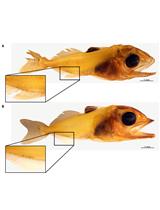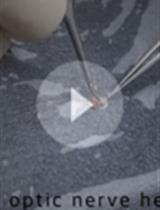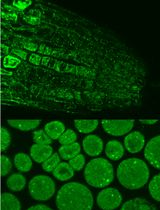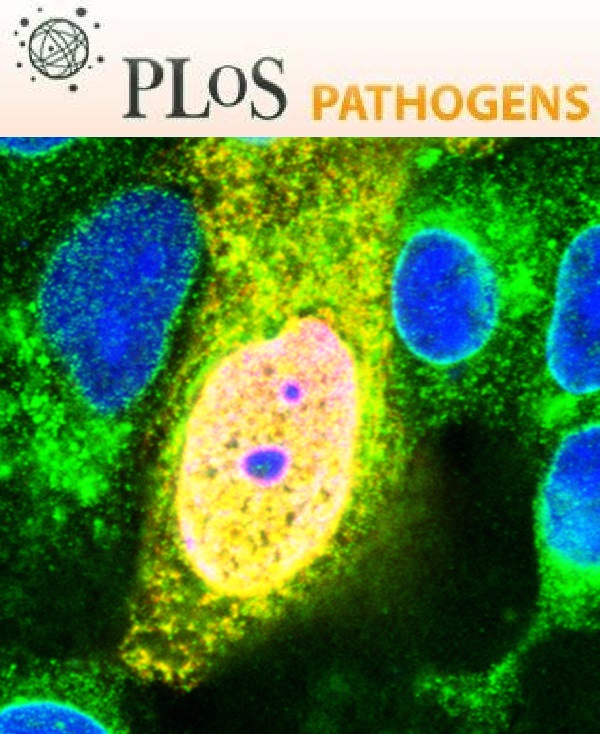- Submit a Protocol
- Receive Our Alerts
- Log in
- /
- Sign up
- My Bio Page
- Edit My Profile
- Change Password
- Log Out
- EN
- EN - English
- CN - 中文
- Protocols
- Articles and Issues
- For Authors
- About
- Become a Reviewer
- EN - English
- CN - 中文
- Home
- Protocols
- Articles and Issues
- For Authors
- About
- Become a Reviewer
Immunocytochemical Detection of Recombinant Biomphalysin on Schistosoma mansoni Sporocysts
Published: Vol 3, Iss 22, Nov 20, 2013 DOI: 10.21769/BioProtoc.969 Views: 9208
Reviewed by: Fanglian He

Protocol Collections
Comprehensive collections of detailed, peer-reviewed protocols focusing on specific topics
Related protocols

Quantification of Cutaneous Ionocytes in Small Aquatic Organisms
Garfield T. Kwan [...] Martin Tresguerres
May 5, 2019 5819 Views

Non-separate Mouse Sclerochoroid/RPE/Retina Staining and Whole Mount for the Integral Observation of Subretinal Layer
Sung-Jin Lee and Soo-Young Kim
Jan 5, 2021 4334 Views

Immunofluorescence for Detection of TOR Kinase Activity In Situ in Photosynthetic Organisms
Ana P. Lando [...] Giselle M. A. Martínez-Noël
Dec 20, 2024 1709 Views
Abstract
Schistosomiasis, or bilharzia, is a tropical disease caused by worms of the genus Schistosoma which infect about 200 million people. The life cycle of the parasite requires Biomphalaria, a specific genus of freshwater snails, as intermediate. Using an interactome approach employing B. glabrata plasma and S. mansoni primary sporocyst extracts, we identified a new cytolytic protein called Biomphalysin that displays similarities to members of the β-PFT superfamily known to form channels in targeted membranes. To investigate its mechanism of action, we produced a recombinant protein flanked by an N-terminal 6 histidine tag. Then, we investigated the ability of Biomphalysin to interact with the sporocyst tegument. This optimized protocol describes an immunocytochemical procedure to detect histidine tagged recombinant protein on the sporocyst tegumental membrane.
Keywords: Interaction host/parasiteMaterials and Reagents
- Paraformaldehyde (PAF) (Sigma-Aldrich, catalog number: 158127 )
- PBS (Sigma-Aldrich, catalog number: P4417 )
- BSA (Sigma-Aldrich, catalog number: A3803 )
- poly-D-Lysine–coated slides (culture slides) (BD Biosciences, Falcon®, catalog number: 354632 )
- Mouse anti-HisG monoclonal antibody (Life Technologies, catalog number: R940-25 )
- Alexa Fluor 594 goat anti-mouse IgG (Life Technologies, catalog number: A 110005 )
- Dako fluorescent mounting medium (Dako, catalog number: S3023 )
- Primary sporocysts of S. mansoni (Brazilian strain) used for immunocytochemical experiments were obtained by transferring miracidia to Chernin’s balanced salt solution (CBSS) and maintaining at 26 °C under normoxic conditions for 24 h (Yoshino and Laursen, 1995). Then, 100 primary sporocysts were incubated for 1 h with 30 nM of recombinant Biomphalysin protein (Galinier et al., 2013). As negative control, 100 sporocysts were used without having been treated with recombinant biomphalysin.
- N terminal His(6)-tagged biomphalysin was expressed in vitro using the Rapid Translation System (RTS 500 Wheat Germ CECF Kit) (5 PRIME, catalog number. 2402500 )
- 4% PAF (see Recipes)
- PBS/3% BSA (see Recipes)
- PBS/1% BSA (see Recipes)
- Anti- HisG antibody 1:500 (see Recipes)
- Anti-mouse IgG 1:1,000 (see Recipes)
Equipment
- Coverslip 24 x 60 mm (VWR International, catalog number: 631-1575 )
- BD BioCoatTM Poly-D-Lysine 8-well CultureSlides (Becton, Dickinson and Company, catalog number: 354632)
- Eppendorf centrifuge (Eppendorf , model: 5810R )
- Swinging agitator (Fisher scientific, model: 10758995 )
- Fluorescence confocal laser-scanning microscope (ZEISS, model: LSM 700 )
Procedure
- Collect 100 sporocysts and transfer to culture slide coated with poly-D-Lysine.
- Centrifuge culture slide at 800 x g for 2 min.
- Aspirate supernatant and fix sporocysts with 200 μl 4% PAF during 1 h at room temperature.
- Centrifuge culture slide at 800 x g for 2 min and aspirate supernatant.
- Wash twice with 200 μl PBS and repeat step 4.
- Add 200 μl PBS/3% BSA and incubate for 2 h at room temperature without agitation.
- Centrifuge culture slide at 800 x g for 2 min and aspirate supernatant.
- Add 200 μl anti-His antibody diluted at 1:500 in PBS and incubate 1.5 h at room temperature with a shaking speed of approximately 12 oscillations per minute.
- Wash three times with 200 μl PBS during 5 min with a shaking speed of 12 oscillations per minute and between wash, centrifuge culture slide.
- Incubate sporocysts with 200 μl Alexa Flour 594-conjugated anti-mouse IgG diluted 1:1,000 in PBS/1% BSA for 45 min at room temperature and protect slides from light with a shaking speed of 12 oscillations per minute.
- Repeat step 9.
- Place 2 drops of Dako fluorescent mounting medium on slide and cover with a coverslip.
- Leave mounted slide overnight at 4 °C and protect slides from light before observation.

Figure 1. Immunolocalization of recombinant Biomphalysin on S. mansoni sporocyst. Sporocysts were treated or not with recombinant Biomphalysin (A : positive and B ; negative control, respectively) and immunostained using anti-His primary IgG and Alexa Fluor 594-conjugated secondary antibodies. Images 1 and 3 were taken under Nomarski light microscopy; images 2 and 4 under using a fluorescence confocal laser-scanning microscope (Zeiss LSM 700).
Recipes
- 4% PAF
Dissolve 4 mg PAF in 100 ml PBS (heat to 60 °C for 1 h with stirring)
The cooled solution can be filtered and stored at -20 °C
- PBS/3% BSA
0.3 mg BSA in 10 ml PBS
- PBS/1% BSA
0.1 mg BSA in 10 ml PBS
- Anti- His antibody 1:500
0.5 μl anti-his antibody in 250 μl PBS only
- Anti-mouse IgG 1:1,000
0.5 μl anti-mouse IgG in 250 μl PBS/1%BSA
Acknowledgments
We thank Anne Rognon and Nathalie Arancibia for technical assistance. We thank all team members for their advice and fruitful discussions. This work was supported by funds from the Centre National de la Recherche (CNRS) and the Université de Perpignan Via Domitia (UPVD), and by a grant from the ANR (25390 Schistophepigen). The funders had no role in study design, data collection and analysis, decision to publish, or preparation of the manuscript.
References
- Galinier, R., Portela, J., Mone, Y., Allienne, J. F., Henri, H., Delbecq, S., Mitta, G., Gourbal, B. and Duval, D. (2013). Biomphalysin, a new beta pore-forming toxin involved in Biomphalaria glabrata immune defense against Schistosoma mansoni. PLoS Pathog 9(3): e1003216.
- Yoshino, T. P. and Laursen, J. R. (1995). Production of Schistosoma mansoni daughter sporocysts from mother sporocysts maintained in synxenic culture with Biomphalaria glabrata embryonic (Bge) cells. J Parasitol 81(5): 714-722.
Article Information
Copyright
© 2013 The Authors; exclusive licensee Bio-protocol LLC.
How to cite
Readers should cite both the Bio-protocol article and the original research article where this protocol was used:
- Duval, D., Galinier, R., Portela, J., Mitta, G. and Gourbal, B. (2013). Immunocytochemical Detection of Recombinant Biomphalysin on Schistosoma mansoni Sporocysts. Bio-protocol 3(22): e969. DOI: 10.21769/BioProtoc.969.
- Galinier, R., Portela, J., Mone, Y., Allienne, J. F., Henri, H., Delbecq, S., Mitta, G., Gourbal, B. and Duval, D. (2013). Biomphalysin, a new beta pore-forming toxin involved in Biomphalaria glabrata immune defense against Schistosoma mansoni. PLoS Pathog 9(3): e1003216.
Category
Immunology > Immune cell staining > Immunodetection
Biochemistry > Protein > Immunodetection > Immunostaining
Do you have any questions about this protocol?
Post your question to gather feedback from the community. We will also invite the authors of this article to respond.
Share
Bluesky
X
Copy link











